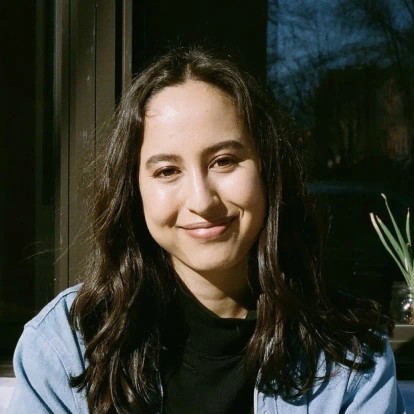If you are contemplating buying a home and find the concept of a mortgage daunting, there’s valid reasons for your concern.
“A mortgage is a death pledge,” says Peter Braunworth, a licensed real estate broker and the principal broker at Coho Realty in Salem, Oregon.
Peter’s comment is not exaggerated. The word “mortgage” comes from Old French: “Mort” translates to “death,” while “gage” means “pledge.”
Fortunately, the terminology isn’t as scary as it sounds. The implication is not that you’ll be paying off your home until you’re dead, but rather that the pledge (the debt) ends when you’ve paid it in full… or upon foreclosure.
Nevertheless, a mortgage is a significant financial obligation, and one that shouldn’t be taken lightly and has a set of variables that differ from renting. If you’d like to purchase a home, odds are you’ll need a mortgage loan to do so, and it’s imperative that you understand what that commitment entails before you buy.
What is a Mortgage?
For most homebuyers, a mortgage is absolutely essential to purchase a property.
According to the Federal Reserve, the median home sales price in Q2 of 2024 was $412,300. Unfortunately, only a small fraction of Americans have $250,000 or more in savings: 3% of Generation Z, 6% of millennials, 7% of Generation X, and 25% of Baby Boomers. In other words, if you want to buy a house, you need a mortgage… or at least a very rich and very generous family member.
But before you panic, instead of thinking of a mortgage as a “death pledge,” let’s reframe the concept. Consider it an “agreement” between you, the borrower, and a bank or credit union, the lender.
“A mortgage is just a loan that’s secured by real estate,” Braunworth adds. “You don’t have enough money to buy a house, so somebody loans you the money, and then if you don’t pay them back, they take the house back.”
A lender benefits from this arrangement by gaining certain closing costs and, of course, interest. Additionally, your home serves as collateral for the loan, meaning that if you fail to pay the lender, they get to claim your house, a process called foreclosure.
Again, don’t panic! According to the Mortgage Bankers Association, the percentage of loans in the foreclosure process at the end of Q1 2024 was just 0.43%, so most buyers are able to keep their end of the bargain. That said, the benefit most borrowers receive by committing to the mortgage “agreement” is — surprise, surprise — a house.
How to Get a Mortgage
Step 1: Review Your Finances
To qualify for a mortgage, a lender typically looks at factors like your employment history, your credit report, your tax returns, and so on.
But despite the eligibility requirements outlined by a lender, it’s equally important for you as the prospective borrower to evaluate your own finances before applying for a mortgage.
“When you are trying to decide whether it’s the right time to get a mortgage, it’s not about nominal dollars,” says Braunworth. “It’s about how that compares to your financial picture.”
For instance, during the mortgage process, you’ll pay a down payment and multiple closing costs. But on top of these anticipated expenses, your home inspection could uncover repairs and maintenance needed on the house. These are all expenses to expect before you close on the loan! Once you have the keys, then you’re responsible for a monthly mortgage payment for the next 15-30 years!
“The right time to get a mortgage is when you’re ready to buy a house, and you can comfortably afford the payment,” says Braunworth. “If your income went to $0, how many months could you make this mortgage payment? As a rule of thumb, if your answer to that question is less than three, you should pause buying a house.”
In other words, a lender will do their due diligence — and you need to do the same.
Step 2: Obtain Pre-Approval
A buyer can certainly apply for a mortgage once they’re ready to make an offer, but it’s far more beneficial to apply for a mortgage loan before you’ve identified a home you want to purchase. This process is called pre-approval.
Getting pre-approved for a mortgage makes your eventual offer on a property more competitive, because it signals to a seller that you’re capable of following through on that offer.
To get pre-approved for a mortgage, you first need to identify the type of loan you need. For most homebuyers under 40, a conventional or government-backed loan will be the best fit. Occasionally, however, you might require a jumbo loan if you want to buy a more expensive property. For a complete breakdown of common types of mortgage loans, scroll down in this article.
Once you know the type of loan you’ll need to purchase the property you want, you’ll have to present a lender with evidence that you’re capable of repaying that loan. Typically mortgage applications request bank statements, tax returns, proof of income and employment, as well as a credit check.
“To qualify for a loan, you have to meet the bank’s requirements for income — your ability to repay the loan — and creditworthiness,” says Braunworth.
Eligibility requirements vary between lending institutions, but it’s safe to assume that most will evaluate the following key categories:
- Credit History: It should come as no surprise to hear that you need good credit to get a mortgage loan. The minimum credit score needed for most mortgages is 620, but there are multiple factors, including the type of loan, that impact this particular requirement.
- Debt-to-Income Ratio: Your debt-to-income (DTI) ratio represents the amount of income you use to cover recurring debts, like rent, credit card debt, and other loans — including your potential mortgage payment. A borrower must have a low DTI to be eligible for a mortgage with most lending institutions. Ideally, your DTI will land at or below 36%, but a DTI as high as 50% may still work.
- Down Payment: Even though you’re borrowing money to pay for a new home, you still need to pay a percentage up front. This is your down payment. You may have heard that 20% is the standard down payment, but a 2023 Bankrate study revealed that more than 42% of their 270,000 consumers put down less than 20%. Depending on the type of loan you select, you can put down as little as 3%.
When you’re applying for a mortgage, it’s a good idea to shop around with at least three lenders to evaluate competing interest rates, closing costs, and other fees. In fact, a recent LendingTree study deduced that those who shop around for a mortgage can save as much as $76,000+ over the lifetime of their loan. Just make sure you submit your applications within a span of 14 days, as multiple credit inquiries made in a short time are typically counted as one.
Step 3: Make an Offer on a Home
Pre-approval letters are often valid for just two to three months, so as soon as you’ve received pre-approval, it’s time to house-hunt!
Many homebuyers flock to listing sites like Zillow and Redfin to find homes for sale in their area. However, it’s best to work with a real estate professional to navigate the buying process. Not only can real estate agents and brokers help you find and tour homes, but they also have access to something called the multiple listing service (MLS).
The MLS is a marketplace of home listings, created and compiled by real estate professionals, and it is far more comprehensive than alternatives like Zillow because it’s actually a collection of more than 800 databases across the nation. The MLS allows both buyer’s agents and seller’s agents to list and locate properties, which ensures that a seller’s home gets in front of as many eyes as possible and the buyer is able to view more homes for sale — including some that may be going up for sale soon, but aren’t publicly listed yet.
Step 4: Obtain Final Loan Approval
Typically, the period between when your offer is accepted and when you officially close on a house lasts one or two months, 43 days on average, and it’s a good thing too! Once your offer has been accepted, there’s a lot that needs to happen before you get the keys to your new home, among the following:
- Your lender will work with an underwriting team to verify your original application and request additional information and documents, such as tax returns and pay stubs, to obtain final loan approval.
- A title company will check the title of your home to make sure there are no issues or concerns.
- You’ll schedule a home inspection to identify any potential repairs or maintenance needed on your home and may even negotiate a new offer with the seller based on these findings. (In very competitive buying processes, the inspection is sometimes waived.)
- Your lender will likely order a home appraisal, which confirms the home’s market value.
- Your lender will open an escrow account with a neutral third party, which holds your earnest money, a “good faith deposit” you pay once your offer has been accepted.
- Your lender will schedule a closing date, at which time you will finalize the terms and costs associated with your mortgage.
This period of the mortgage process is when you’re “in escrow.”
“‘In escrow’ means there’s a purchase agreement between a buyer and a seller that hasn’t been finalized yet,” says Braunworth. “You’re in this limbo between having the seller accept your offer and before it’s actually closed.”
Step 5. Close on Your Loan
Three days before your closing date, you will receive a closing disclosure form which outlines the final details of your mortgage. In this disclosure, you’ll get a detailed breakdown of your closing costs.
“Closing costs for your loan are essentially whatever costs the lender is going to incur in order to give you the loan,” says Braunworth.
Typically closing costs amount to 3%-6% of your total loan amount, and while buyers and sellers both pay some closing costs, the buyer is responsible for the bulk of them. However, just as is the case with the terms of your mortgage loan, closing costs vary from lender to lender. Closing costs for a buyer may include, but are not limited to, the following:
- Origination fee
- Underwriting fee
- Processing fee
- Appraisal
- Application fee
- Title fees
- Title insurance
- Recording fee
- Attorney fee
- Closing fee
- Courier fee
In addition to paying closing costs, on closing day you’ll sign several documents, including a promissory note, which acts as your written promise to pay for the home, and the deed, which officially transfers ownership of the home to you.
At the end of the meeting, you’ll receive the keys to your brand new home!
What’s Included in a Mortgage Payment?
Once you’ve acquired your mortgage and purchased your home, then the real work begins: repaying the loan.
Your monthly mortgage payment is a little more complex than the total purchase price of your home divided up by the number of months in your loan term. In fact, there are a few components of your mortgage payment, collectively referred to as “PITI:” principal, interest, taxes, and insurance.
Principal
The principal is the total amount of money you’ve borrowed from your lender. However, even though the principal accounts for a significant portion of your monthly mortgage payment, it does not represent the total amount you owe each month.
Interest
Interest is a fee the lender charges you, the homebuyer, for borrowing funds. It’s typically a percentage of the total loan. Average interest rates have fluctuated over time, ranging between 3% and 8% since 2000 for a 30-year, fixed rate mortgage. But, interest rates also vary from buyer to buyer based on the financial snapshot provided in your loan application.
Taxes
Remember that escrow account you opened before closing on your house? Once the closing date is behind you, that same account often stays open and is used to pay not only your monthly mortgage payment, but also taxes related to your home. Your lender collects funds for your property taxes in the escrow account to pay on your behalf when they’re due.
Insurance
Like property taxes, your lender can also gather and cover insurance costs using your escrow account. This includes homeowners insurance premiums, as well as private mortgage insurance (PMI), which is an essential cost required by a lender if you got a conventional loan and your down payment was less than 20%.
Types of Mortgage Loans
The most common type of home loan by far is a 30-year, fixed-rate mortgage. In fact, a whopping 90% of homebuyers apply for this particular mortgage type!
Nevertheless, there are a wide variety of homebuyers and a range of mortgage options to accommodate them. They include, but are not limited to, the following:
30-year or 15-year
The two most common term lengths are 30 years and 15 years. As mentioned previously, The vast majority of homebuyers opt for a 30-year term, largely because doing so decreases your monthly mortgage payment. However, with a 15-year mortgage you’ll typically get a lower interest rate and, as a result, pay less in interest over the life of the loan.
Fixed-Rate or Adjustable-Rate
With a fixed-rate mortgage, your interest rate stays the same for the entire lifespan of your mortgage. With an adjustable-rate mortgage (ARM), your rate fluctuates with the market.
Fixed-rate mortgages are ideal, and more popular, as they provide homeowners with a level of predictability. However, adjustable mortgage rates can be beneficial if average mortgage rates are high when you purchase your home, since they typically start with an initial low, fixed rate for the first several years.
Conventional or Government-Insured
Conventional loans are not insured by the federal government, but instead meet a series of requirements set by government-sponsored enterprises (GSEs), which purchase the vast majority of home loans from lenders to keep those institutions liquid. You’ve likely heard of two GSEs: the Federal National Mortgage Association and the Federal Home Loan Mortgage Corporation, better known as Fannie Mae and Freddie Mac.
Conventional loans are sufficient for many homebuyers, but the maximum loan amount established by the Federal Housing Finance Agency (FHFA) is $766,550 in most counties. Homebuyers interested in properties that exceed this number will instead require a jumbo loan. Jumbo loans are not guaranteed by Fannie Mae or Freddie Mac, so they’re typically considered riskier for lenders.
Government-insured or government-backed loans, as the name implies, are insured by the federal government. These loans can make homeownership more accessible for borrowers, especially those that are purchasing their first home and/or with low-to-moderate income or savings. Some of the most common types of government-backed loans include FHA loans (backed by the Federal Housing Administration), VA loans (backed by the Department of Veterans Affairs), and USDA loans (backed by the United States Department of Agriculture).







